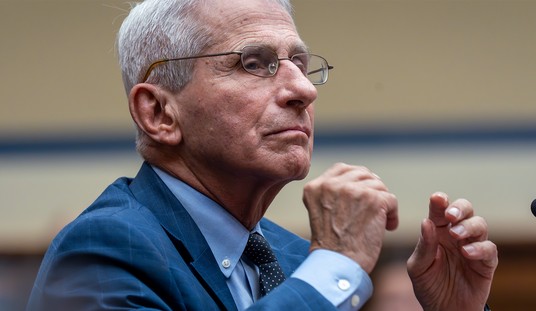At the PJ Lifestyle blog, James Lileks explores the culture and atmosphere of the 1920s, to explain why it’s such a little-understood decade. Beyond the sights and smells of the era, with the conclusion of The Great War, there was a sense that if it wasn’t The End of History (as Francis Fukuyama believed the end of the Cold War ushered in), there was a utopian belief that it was The End of War at least, as Neo-Neocon writes on her blog:
The 20s meant nothing to me except flapper clothing, the Charleston, and the Crash. But my mother—who had been six years old at the decade’s beginning, and a high school graduate of sixteen at its end—told me something about those years that had stuck in her memory. It subsequently stuck in mine.
“The adults told us we were the luckiest generation in history, that we should thank our lucky stars because we’d never know war,” said this member of the Greatest Generation, who was to see the Great Depression and World War II in short order.
What had motivated her elders to tell my mother and her classmates that? Why, the Kellogg-Briand Pact had been signed in 1928, when she was fourteen:
The Kellogg–Briand Pact (officially the Pact of Paris) was a 1928 international agreement in which signatory states promised not to use war to resolve “disputes or conflicts of whatever nature or of whatever origin they may be, which may arise among them”. Parties failing to abide by this promise “should be denied the benefits furnished by this treaty”. It was signed by Germany, France and the United States on August 27, 1928, and by most other nations soon after. Sponsored by France and the U.S., the Pact renounced the use of war and called for the peaceful settlement of disputes.
Needless to say, as Neo writes, “It should come as absolutely no surprise to anyone here that the pact didn’t quite work the way it was supposed to.”
But beyond the 1920s, two of the biggest stories of the 1960s are also being revised. First up, the Wall Street Journal notes that “Capote Classic ‘In Cold Blood’ Tainted by Long-Lost Files:”
Truman Capote’s masterwork of murder, “In Cold Blood,” cemented two reputations when first published almost five decades ago: his own, as a literary innovator, and detective Alvin Dewey Jr.’s as the most famous Kansas lawman since Wyatt Earp.
But new evidence undermines Mr. Capote’s claim that his best seller was an “immaculately factual” recounting of the bloody slaughter of the Clutter family in their Kansas farmhouse. It also calls into question the image of Mr. Dewey as the brilliant, haunted hero.
Perhaps more significantly, as we noted earlier this week, the current incarnation of the New York Times is questioning the book on the 1964 murder of Kitty Genovese written by the late Abe Ronsenthal, the Times editor who saw the paper through its pre-Pinch, pre-Howling Howell Raines, pre-Gray Lady Down glory days:
The digitization of books has facilitated the rerelease of a spate of nonfiction works years or decades after their initial publication, and in some cases the common interpretation of their subject matter has evolved or changed significantly.
Melville House confronted this situation with its decision to reissue in December a 1964 book by A. M. Rosenthal, “Thirty-Eight Witnesses: The Kitty Genovese Case.” The book was originally released just months after the murder in March 1964 of 28-year-old Catherine Genovese, known as Kitty, who at around 3 a.m. was returning from her job at a tavern to her apartment in Kew Gardens, Queens, when she was assaulted, stabbed to death and then raped by a psychotic killer.
It was a gruesome story that made perfect tabloid fodder, but soon it became much more. Mr. Rosenthal, a Pulitzer Prize-winning reporter who would go on to become the executive editor of The New York Times, was then a new and ambitious metropolitan editor for the paper who happened to be having lunch with the police commissioner 10 days after the crime. The commissioner mentioned that 38 people had witnessed the murder, and yet no one had come to Ms. Genovese’s aid or called the police.
Mr. Rosenthal quickly mapped out a series of articles centered around a tale of community callousness, and then followed in June with his quick-turnaround book, published by McGraw-Hill. National and international interest in the issue spiked, and soon the Kitty Genovese case became a sociological phenomenon studied intensely for clues to behavioral indifference.
In the years since, however, as court records have been examined and witnesses reinterviewed, some facts of both the coverage and the book have been challenged on many fronts, including the element at the center of the indictment: 38 silent witnesses. Yet none of the weighty counter-evidence was acknowledged when Mr. Rosenthal’s book was reissued in digital form by Melville — raising questions of what, if any, obligation a publisher has to account for updated versions of events featured in nonfiction titles. Dennis Johnson, the publisher of Melville House, said he knew about the controversy but decided to stand behind Mr. Rosenthal’s account. “There are, notably, works of fraud where revising or withdrawing the book is possible or even recommended, but this is not one of those cases,” he said. “This is a matter of historical record. This is a reprint of reporting done for The New York Times by one the great journalists of the 20th century. We understand there are people taking issue with it, but this is not something we think needs to be corrected.”
Which raises a great point — given the ability of the Blogosphere to attack a story from all angles, and the ability of historians in general to pile on new research accumulated over the years, the details of many nonfiction books will become dated over time. And while that might require some books to require new introductions or addendums, but that shouldn’t cause those books to go out of date, or have their core contents airbrushed, Ministry of Truth style.
Because as one of the Ricochet contributors notes, history in general is fading fast:
My son has been interested in military history since he read a book about the Civil War at the age of 10. His interest eventually blossomed into a decision to pursue a Ph.D. with the goal of teaching at a university. Currently, he’s a graduate student working on his master’s degree.
But his dream may not be achieved … at least not in the way he thought it would play out. Why? Because the academic world is increasingly reducing its support of military historians. The discipline is considered archaic.
What he is sadly discovering is that many institutions of higher learning take a jaundiced view of “traditional” fields of history — which is to say military, diplomatic, imperial, and political history. Some professors like to tell students that these fields are outdated and racist.
For example, look at the demographics of one well-known West Coast university’s history department: it has no diplomatic historians, no military historians, and just a couple of political historians. Probably 50-75% of the faculty espouse overtly Marxist paradigms, with perhaps only one who could be called slightly conservative.
The French Revolutionary historian isn’t really concerned much with the French Revolution, instead focusing solely on things like “material culture” (dresses and theater, etc.). The department’s Civil War historian does not actually study the war part of the Civil War, instead focusing on the “memory” of the Civil War (i.e., why history remembers Grant to be a drunkard and how grave markers and monuments were designed after the war). If one wants to learn much about big events, important leaders, or causes and effects of major events and policy, it’d be best for them to look elsewhere.
One reason why academia airbrushes history is that they don’t too many of the left’s myths examined too carefully, lest people discover, as Kathy Shaidle writes today, “The Rosenbergs were guilty. Sacco and Vanzetti were guilty. Alger Hiss was guilty. OJ was guilty. Lee Harvey Oswald was guilty. Mumia was guilty. Leonard Peltier was guilty.”
Of course, airbrushing history is feature, not a bug to academia and the left (but I repeat myself). A decade ago in City Journal, Theodore Dalrymple looked at Aldus Huxley’s Brave New World, George Orwell’s 1984, and “The Dystopian Imagination” in general. After quoting a passage from 1984 in which Orwell imagined the inventors of IngSoc would write to justify their ideology’s creation and its subsequent totalitarian state, Dalrymple writes:
The kind of historiography expressed in this satirical passage has become virtually standard in the various branches (feminist, black, gay, and so on) of academic resentment studies, in which history is nothing but the backward projection of current grievances, real or imagined, used to justify and inflame resentment.
The object of such historiography is to disconnect everyone from a real sense of a living past and a living culture. Indeed, the underlying theme uniting the two great dystopias of the twentieth century is the need to preserve a sense of history and cultural tradition if life is to be bearable. This theme is all the more powerful, because both Huxley and Orwell were by nature radicals: Huxley was a socialist at Oxford, flirted with fascism in the 1930s, and then became a West Coast guru; Orwell was a socialist from an early age and a lifelong enemy of the status quo. Both implicitly realized as they contemplated the future that preservation was as important as change in human life: that the past was as important as the present and the future.
In both dystopias, people find themselves cut off from the past as a matter of deliberate policy. The revolution that brought about the Brave New World, says Mustapha Mond, was “accompanied by a campaign against the Past”—the closing of museums, the blowing up of historical monuments (as in the Taliban’s Afghanistan), the banning of old books. In 1984, “the past has been abolished.” “History has stopped. Nothing exists except an endless present in which the Party is always right.”
Such dystopian engineering is at work in my own country. By the deliberate decision of pedagogues, hundreds of thousands of children now leave school without knowing a single historical fact about their own country. The historical principles that museums have traditionally used to display art have given way to ahistorical thematic displays—portraits of women from a jumble of eras, say. A meaningless glass box now sits on a pediment in London’s Trafalgar Square as a “corrective” to the historical associations of that famous urban space. A population is being deliberately created with no sense of history.
The result is what Mark Steyn calls “Present Tense Culture.” In other words, as we’ve noted before, sure much of what we know about the 20th century is wrong — and many of journalism’s self-justifying myths play a big factor in that. But, hey, as our postmodern former Secretary of State likes to say: What difference does it make?










Join the conversation as a VIP Member